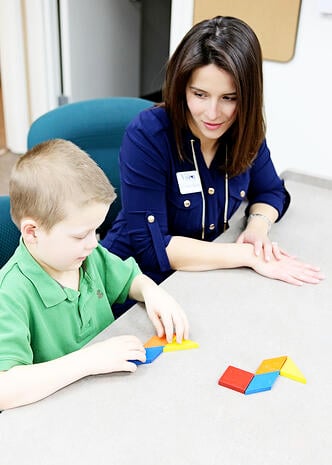Visual Integration & Processing (V.I.P.)


visual Integration & Processing
- My child gets upset when they have to go somewhere new, or leave somewhere familiar that they like
- My child gets frustrated or gives up quickly when they can find something
- My child is having difficulty understanding math concepts
- My child is struggling with reading comprehension
These are some of the challenges parents report that are associated with Visual Processing challenges.
There are many different levels and types of visual processing challenges, and many result in negative emotions. Frustration, anger, confusion, anxiety, and avoidance are some of the common emotions triggered when we have difficulty understanding our environment. Many of the behavioral and learning challenges children experience are, in part, connected to visual processing, but they are also, in part, a result of the emotions triggered by the difficulties and stress perceived by the child.
To help children fully succeed it is important to address both components, the visual processing and the emotional processing.
Visuo-Cognitive Therapy, pioneered by Dr. Harry Wachs, O.D., is an important part of a program to address these challenges. This technique differs and goes beyond standard vision therapy by adding a hierarchy based on thinking abilities to improve a broader range of functioning, not just the movement of the eyes. In this way, the student develops by thinking, and is able to maximize his or her potential by applying sensorimotor skills to cognition and executive function.
Working on with the emotional system to help understand and tolerate the stress in the child’s life and reduce the conflict that can arise within the family relationships is another important component.
Visual Integration & Processing is helpful for children with many different diagnoses including Autism, Sensory Processing Disorder, Learning Challenges and Behavioral Problems. It helps them understand what they are seeing, improves their attention and focus, and helps them success in social environments.
- Visual Thinking (visualization, abstract reasoning, memory)
- General Movement (mental map of the body, body integration, rhythm, primitive and postural reflexes)
- Visual Math and Visual Logic
- Letter Reversals (right-left awarness)
- Graphics (writing, drawn representation, graphical control)
- Digital Discriminative Movement (pencil grip, other fine motor tasks)
- Receptive and Expressive Communication
- Visual Motor Integration (focus, tracking, and scanning)
- Speed and Accuracy (Subitization, Rapid Automatized Naming, Visual Capture including word attack)
Shannon Scott, MSOT, OTR/L
Shannon is an Occupational Therapist with a Visual Rehab Certificate.
Marc Toureille
Marc is a certified Greenspan Floortime Specialist, and has a Visual Rehab Certificate.
